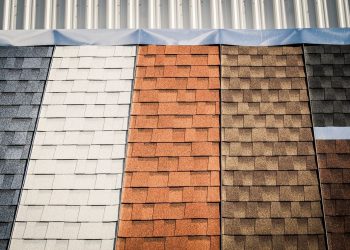RISMEDIA, June 24, 2009-Sales of existing homes showed another gain in May, benefiting from favorable affordability conditions and a first-time buyer tax credit, according to the National Association of Realtors®. May’s increase was the first back-to-back monthly gain since September 2005.
Existing-home sales-including single-family, townhomes, condominiums and co-ops-rose 2.4 percent to a seasonally adjusted annual rate of 4.77 million units in May from a downwardly revised level of 4.66 million units in April, but remained 3.6 percent below the 4.95 million-unit pace in May 2008.
Lawrence Yun, NAR chief economist, expected an improvement. “Historically low mortgage interest rates clearly drew buyers into the market, and housing remains very affordable even with a recent uptick in rates,” he said. “First-time buyers also are being drawn off the sidelines by the $8,000 tax credit, which is helping to absorb inventory. However, the increase in sales is less than expected because poor appraisals are stalling transactions. Pending home sales indicated much stronger activity, but some contracts are falling through from faulty valuations that keep buyers from getting a loan.”
According to Freddie Mac, the national average commitment rate for a 30-year, conventional, fixed-rate mortgage edged up to 4.86% in May from a record low 4.81% in April; the rate was 6.04% in May 2008. Last week, Freddie Mac reported the 30-year fixed at 5.38%; data collection began in 1971.
Total housing inventory at the end of May fell 3.5% to 3.80 million existing homes available for sale, which represents a 9.6-month supply2 at the current sales pace, down from a 10.1-month supply in April.
Yun said the appraisal problem is serious. “Lenders are using appraisers who may not be familiar with a neighborhood, or who compare traditional homes with distressed and discounted sales,” he said. “In the past month, stories of appraisal problems have been snowballing from across the country with many contracts falling through at the last moment. There is danger of a delayed housing market recovery and a further rise in foreclosures if the appraisal problems are not quickly corrected.”
An NAR practitioner survey in May showed first-time buyers accounted for 29% of transactions, and that the number of buyers looking at homes is nearly 10 percentage points higher than a year ago. “This is the time of year when we see large increases in the number of repeat buyers, who are benefitting from sales to entry-level buyers,” Yun said. “Investors appear less active, but are more prevalent in areas with large price corrections.”
NAR President Charles McMillan, a broker with Coldwell Banker Residential Brokerage in Dallas-Fort Worth, said appraisals and the tax credit are key issues. “To maximize the potential for a housing recovery and subsequent economic recovery, we need realistic appraisals that are based on proper comparisons and done by a local specialist,” he said. “In addition, the first-time buyer tax credit should be expanded to all buyers of primary homes regardless of income. Extending the credit into 2010 would allow more time for the market to catch up with underlying demand, in part because many families with children, who normally time their purchase based on school year considerations, do not have enough time to move before the start of school in late August.
“Freeing a pent-up demand in housing will absorb inventory at a faster pace, strengthen communities and stabilize home prices earlier,” McMillan said.
The national median existing-home price3 for all housing types was $173,000 in May, down 16.8% from a year earlier. Distressed properties, which declined to 33% of all sales in May from 45% in April, continue to downwardly distort the median price because they generally sell at a discount relative to traditional homes.
“The decline in the distressed sales share likely results from an increase of repeat buyers in May,” Yun said. “First-time buyers are concentrated in the lower price ranges, which include most of the distressed sales.”
Single-family home sales rose 1.9% to a seasonally adjusted annual rate of 4.25 million in May from a pace of 4.17 million in April, but are 3.0% below the 4.38 million-unit level in May 2008. The median existing single-family home price was $172,900 in May, down 16.1% from a year ago.
Existing condominium and co-op sales increased 6.1% to a seasonally adjusted annual rate of 520,000 units in May from 490,000 in April, but are 8.9% below the 571,000-unit level in May 2008. The median existing condo price4 was $173,800 in May, down 21.9% from a year earlier.
Regionally, existing-home sales in the Northeast rose 3.9% to an annual level of 800,000 in May, but are 10.1% below a year ago. The median price in the Northeast was $243,600, which is 12.5% below May 2008.
Existing-home sales in the Midwest jumped 9.0% in May to a pace of 1.09 million but are 4.4% below May 2008. The median price in the Midwest was $145,800, which is 10.4% lower than a year ago.
In the South, existing-home sales were unchanged at an annual pace of 1.74 million in May but are 8.9% below a year ago. The median price in the South was $157,400, down 9.9% from May 2008.
Existing-home sales in the West slipped 0.9% to an annual rate of 1.14 million in May, but are 11.8% higher than May 2008. The median price in the West was $197,700, down 30.6% from a year ago.
For more information, visit www.realtor.org.










